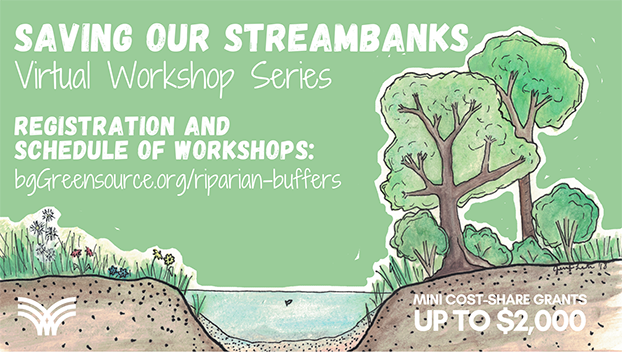Protecting our waterways and saving our streambanks
Published 3:52 pm Wednesday, March 3, 2021
By Lindsie Nicholas and David McGrade
Bluegrass Greensource
News release
Bluegrass Greensource is hosting the Saving Our Streambanks Virtual Workshop Series this month.
The series is free and open to the public. As an attendee, you will learn the information, tools, and resources needed to establish streamside buffers and stabilize streambanks on your property and in our communities.
The series runs Tuesday through Thursday, March 9 through 25 from 3-4 p.m. via Zoom. Speakers include folks from Roundstone Native Seed, Beaver Creek Hydrology, Oakland Farm Trees, Ironweed Nursery, Bluegrass Greensource, and regional reps from NRCS, Soil and Water Conservation District, and UK Extension Service.
Mini cost-share grant applications will be available to those who attend for streamside buffer establishment in the Clarks Run and Hanging Fork watersheds in Boyle and Lincoln counties. Grants are reimbursable up to $2,000. You must attend one of the Water Quality and Streamside Buffer 101 workshops offered on March 9 and March 18, and at least one other workshop in the series to be eligible for the mini grants.
Registration, the full workshop schedule, speaker list and more can be found on the website at bggreensource.org/riparian-buffers/
With the changing seasons comes changes to our streams and local water bodies. Where does all that snow melt and rainwater go, and how does it affect me? There are a couple sayings in the water community, “we all live in a watershed” and “we all live downstream,” but what do these mean, and what are the implications?
A watershed is an area of land where the water that flows across or under drains to a common body of water. When we look towards most maps of the United States, we see our country divided by states.
Looking at an individual state, it is then broken down further into counties and towns. We can think of our watersheds in the same way. A watershed can be a small portion of the county you live in, but when combining multiple watersheds, they can grow into multi-state areas or larger.
Think the Mississippi River Basin. Recognizing these natural divisions of water that ignore county lines is important to maintaining the health of every person and animal that lives within them — we all live in a watershed.
Depending on where you live, your local watershed is most likely where you get your drinking water and includes the stream that runs right through your backyard or favorite park. Every drop of rain or snow that falls in your watershed will either be absorbed into the soil, or it will flow over the landscape to a local water body.
As this water flows over land, it picks up pollutants like sediment, trash, nitrogen and phosphorus from excess fertilizers, bacteria in human waste from failing septic systems or sewer lines, pet and livestock waste, oils, grease and chemicals from roads and parking lots before it reaches the water.
These pollutants not only affect your local waterways, but can also affect drinking water sources miles downstream, or in the direction the stream water flows. The type and quantity of pollutants that reach our waterways affect local water quality in our watershed and beyond.
Protecting our waterways allows us to enjoy the multiple benefits that are associated with its protection, including a clean drinking water source and safe waters for recreation. Consciously being aware of our impact on waterways helps protect them.
We can help in small ways that make a big impact by properly disposing of trash and car fluids, picking up pet waste, and learning sustainable lawn care practices. Looking to our streams, streamside plantings, also referred to as riparian buffers, and streambank stabilization and restoration projects have long lasting roles in protecting our waterways and improving water quality.
A streamside, or riparian, buffer is a vegetated strip or zone along a stream that contains a combination of trees, grasses, shrubs and perennials. Plant roots in the buffer filter out excess nitrogen and phosphorus in the stormwater runoff, as well as, sediment, bacteria and other pollutants.
The buffers also help prevent streambank erosion and provide a habitat for various aquatic and terrestrial species. Not only is there an obvious benefit to the water quality of the stream, but a riparian buffer can be very aesthetically pleasing as well.
Whenever you go to your favorite park, what can be so enjoyable is the scenery and native plants. Yet, a riparian buffer’s beauty doesn’t have to stop at the park. Bluegrass Greensource, and other organizations, offer cost-share programs and guidance on how to establish your own riparian buffer. Register for the workshop series to learn more.






